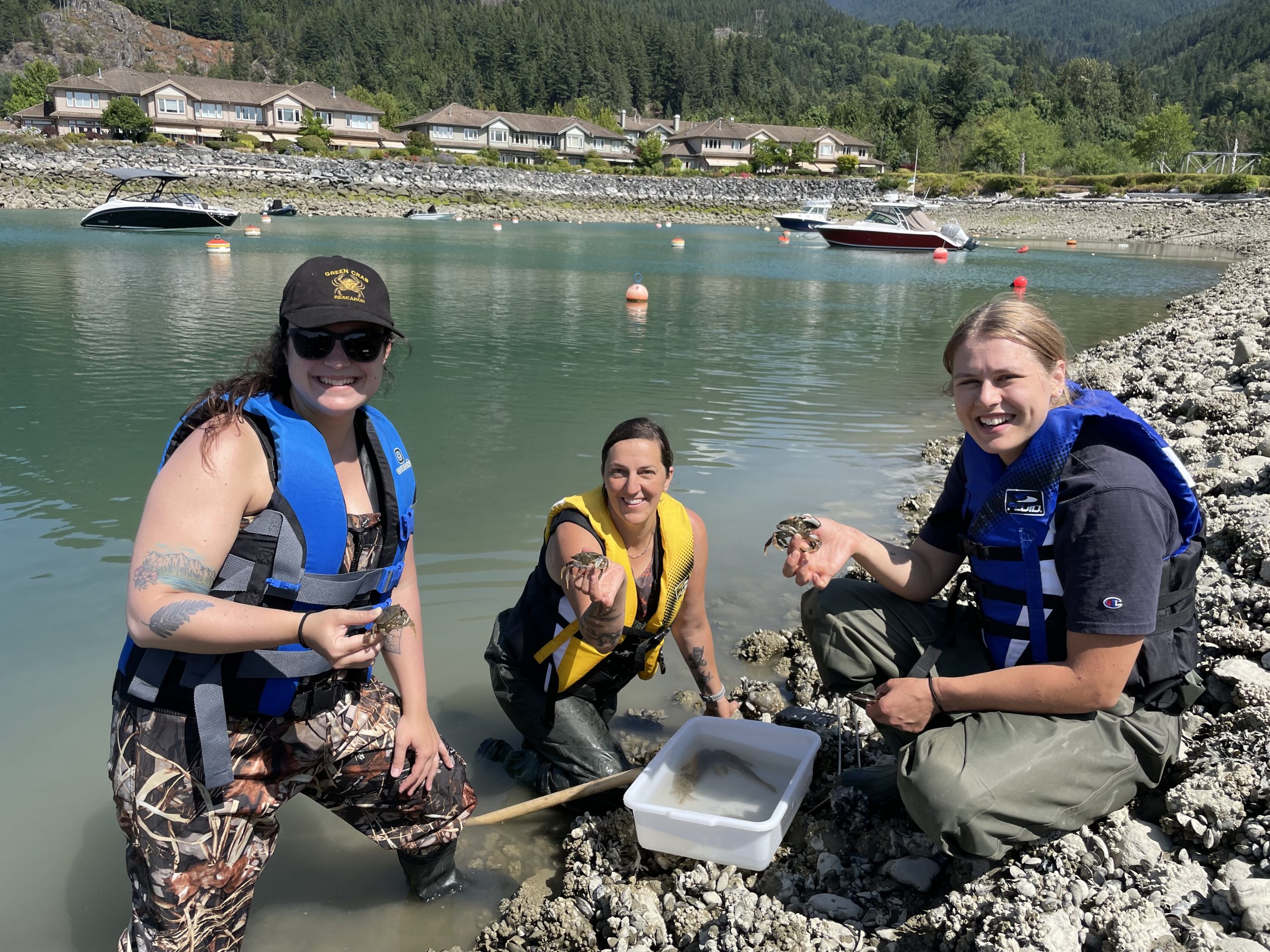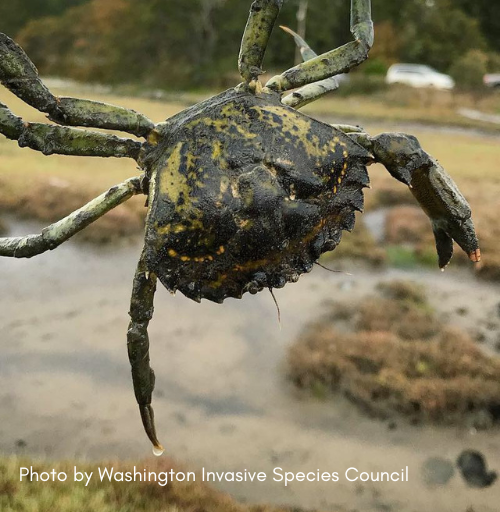Highlights from European Green Crab Monitoring in July
We’ve been catching a lot of crabs lately! Thankfully no invasives ones.
But this has given our volunteers the opportunity to put their crab identification and handling skills to the test. Though we don’t catch very large crabs (due to the size of the opening in our trap), juvenile Dungeness crabs can still be pretty feisty and resistant to being picked up.
So how do you safely pick one up?* There are a couple of different ways to avoid their large claws. The method we typically go for is to try and pick up the crab from behind; with your thumb on the top shell, and one or two fingers on the bottom shell. Sometimes their back legs can still reach your fingers, so some of our volunteers choose to wear gloves when doing this. Another method is to pick the crab up at the widest point in its shell, which keeps all the claws away from your fingers. However, this method can be a little less secure.
*Note – we’re handling crabs as part of our EGC monitoring program, with a scientific license from Fisheries & Oceans Canada (DFO). Please avoid disturbing wildlife whenever possible!

Our Crab Teams have also been catching a lot of sculpins, which are a type of bottom-dwelling fish. There are hundreds of different species of sculpins! They can be tricky to identify and distinguish (and we typically don’t pick them up, since they’re more sensitive to human touch than crabs), but we believe we’re catching mostly Pacific staghorn sculpins in our traps. They seem to be particularly abundant in the muddy, brackish waters of the Squamish Estuary sites.
We also caught our first shiner perch of the season, at our Mamquam Blind Channel site. This is another type of fish that is typically found in brackish or estuarine areas.

What we’ve caught (and released) in 2023:
- 58 sculpins
- 6 shore crab
- 26 Dungeness crabs
- 3 crangon
- 4 sea gooseberries
- 3 shiner perch
- No European Green Crab (so far!)
From creation to crustacean
Since our founding in 2009, the Sea to Sky Invasive Species Council has grown from one part-time staff member and a handful of volunteers to 16 staff members during the peak season with a broad range of partners and funders.
Read more about some of SSISC’s history and the beginnings of Crab Team in this article written by the Invasive Species Council of British Columbia.



Why are we monitoring for invasive crabs?
To-date, there have been no detections of European Green Crab in Howe Sound, but they have been found as close as Salt Spring Island, San Juan Island (in the US), Boundary Bay (just south of Vancouver), along the Sunshine Coast, and all over the West Coast of Vancouver Island.
We launched our monitoring program in 2021 to enable early detection of this invasive species if it arrives in Howe Sound. Continuing this long-term monitoring program is important because the arrival and establishment of European Green Crab could significantly threaten the unique marine wildlife in Howe Sound and the Squamish River Estuary.
You can learn more about Crab Team here.
Have we ‘pinched’ your interest? Here’s some useful links:













Add Comment